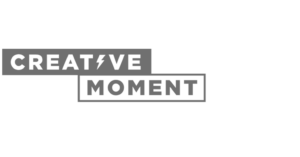Without structure, even the best content ideas risk getting lost in the noise. It’s important to keep your content organised and intentional.
This article is part three of our six-part series, A Complete Guide to Why Your Business Needs a Social Media Strategy. In this instalment, we focus on how careful planning and scheduling can transform your social media output from reactive posting to purposeful communication.
If you want to stand out online, you need to plan and schedule content with intention. Whether you are a small business owner, a member of a marketing team, or a social media manager, having a clear system in place will help you stay consistent, work efficiently, and reach more people.
In this guide, we’ll walk you through everything you need to know about planning and scheduling content. You’ll learn why it matters, how to do it effectively, which tools can help, and how to build a dependable content calendar that supports your goals. From blog posts and videos to visuals and written updates, this guide will help you make the most of every piece of content you create.
Why Planning and Scheduling Content Matters
If you want your social media strategy to work, you need to post regularly. When you don’t plan ahead, you often end up rushing or posting random things. That approach rarely works.
When you take the time to plan and schedule content, you can link your posts to your goals. You’ll also have a better chance of reaching the right audience at the right time, using the right message. A well-organised approach helps you focus, stay on-brand, and keep your followers engaged.
Scheduling your posts in advance also means you can save time. You’ll no longer need to come up with ideas each day or scramble to get something live. Instead, you can build a clear plan, track your progress, and spend more time improving your results.
Why Social Media Marketers Rely on Scheduling
For experienced teams, scheduling isn’t just about efficiency-it’s about precision, cohesion, and control across complex campaign environments. In a fast-moving landscape where multiple content streams, platforms, and stakeholders are in play, a well-structured scheduling strategy becomes critical to performance.
It ensures multi-channel consistency without sacrificing strategic nuance. Rather than posting ad hoc, scheduling tools allow us to orchestrate messaging across regions, audiences, and platforms-each adapted for local tone, platform format, and campaign timing-without disrupting broader narrative arcs.

Scheduling also enables data-led content timing, using historical engagement trends, predictive algorithms, and A/B testing results to deploy content at optimal windows. This isn’t about generic “best times to post” but custom benchmarks based on audience behaviour and campaign objectives.
More importantly, scheduling connects content to broader strategic timelines-product launches, seasonal milestones, PR events, or crisis communication protocols. By pre-mapping publishing calendars to the business roadmap, we ensure that every post plays a defined role in shaping perception or prompting action.
And finally, by automating the mechanics of posting, advanced teams free up bandwidth to focus on performance analysis, optimisation, and rapid-response engagement-the areas where true ROI is made.
Tools That Make Scheduling Easier
There are plenty of tools that help you plan and schedule content. Most of them include a content calendar, support multiple social media platforms, and offer helpful features like drag and drop planning.
Popular options include Canva, Later, Planable, Hootsuite, and Buffer. These tools allow you to create content, upload images, write captions, and schedule your posts from one place. Some also offer performance tracking, team collaboration, and AI-generated content suggestions.
Using the right tool can help you save time, reduce stress, and make better decisions. Many social media managers also use these platforms to test different posting times and see which ones lead to more audience engagement.
A Simple Approach to Planning and Scheduling Content
Our content planning process is designed for strategic precision, cross-team alignment, and long-term adaptability. Rather than working post-by-post, we build a content infrastructure that supports campaign velocity, creative variation, and fast optimisation.
We begin by anchoring content around strategic pillars aligned to business objectives-these may include thought leadership, reactive PR opportunities, customer proof points, brand storytelling, or demand-generation assets. Each pillar has a defined purpose in the wider marketing ecosystem and is mapped to audience intent and funnel stage.
We then operationalise these themes using a dynamic content calendar-not just to schedule posts but to orchestrate narratives across channels, integrate with paid campaigns and sync with media outreach, product timelines, and live events. Key moments-such as launches, seasonal peaks, or planned stunts-are reverse-engineered into content build and distribution timelines.
Content creation is handled in modular workflows: copy, creative, and platform-specific adaptations are developed simultaneously, allowing for faster approval cycles and A/B variant testing. Everything is reviewed through the lens of tone, channel intent, and audience relevance, not just brand alignment.
Finally, we deploy content using data-informed scheduling logic. Rather than relying on static “best times,” we apply audience behaviour patterns, platform algorithms, and past engagement insights to optimise release windows. Scheduled content is layered with real-time flexibility-allowing us to inject reactive or opportunistic content when needed without disrupting the strategic flow.
By planning at this level, we don’t just maintain consistency-we gain the ability to forecast performance, measure impact across content categories, and continuously evolve based on results.
Why Timing Makes a Difference
Posting at the right time can make a big impact. Even great content can go unnoticed if it’s shared when your audience isn’t online.
That’s why many tools now offer data on the best times to post. These insights are based on when your audience is most active, helping you schedule your content for maximum visibility and engagement.
Every platform is different. LinkedIn might perform better in the morning, while Instagram could work best in the evening. The more you understand your audience, the easier it becomes to choose the right times for each piece of content. Below is the research of Hootsuite.
| Best Times to Post on Social Media (2025) | ||
|---|---|---|
| Platform | Time | Day |
| 9am | Tuesday | |
| 3pm to 9pm | Monday | |
| TikTok | 7am to 11am | Thursday |
| X (Twitter) | 9am to 11am | Wednesday, Thursday, Friday |
| 4am to 6am | Tuesday and Wednesday | |
| Threads | 8am | Tuesday |
Using a Mix of Content Types
Strong social strategies include a range of content. Blog posts, images, videos, stories, tips, polls-they all play a role in keeping your content fresh and engaging.
When creating content, make sure each piece of content serves a purpose. Some posts are meant to drive traffic, others spark conversation or build trust. By mixing the types of content we use, we can connect with our audience in different ways and keep our feed interesting.
We reuse and repurpose content where we can. A blog post might turn into a short video, a quote graphic, or a carousel. This helps us get more value from the time we spend creating content.
Different types of content perform better on different platforms. It’s unrealistic to expect the same content to succeed everywhere. Each platform attracts a unique audience, so it’s crucial to understand what resonates best in each space. Below, we’ve outlined various platforms and the types of content that tend to perform well on each (source: Sprout Social).
| What Types of Content Performs Well on Each Platform | |
|---|---|
| Platform | Content Type |
| Short form videos, Text Posts, Images | |
| Short form videos (<15 seconds) | |
| TikTok | Short form videos (15-30 seconds) |
| Youtube | Long form videos (>60 seconds) |
| X (Twitter) | Text Posts and Images |
| Text Posts and Images | |
| Threads | Text and photos |
Staying Flexible While Staying on Track
Even with a well-structured content calendar, adaptability is essential. Campaigns rarely unfold exactly as planned-news breaks unexpectedly, cultural moments surface and platform dynamics shift in real-time. A truly effective scheduling strategy accounts for this by balancing structure with responsiveness.
A strong approach is to plan approximately 70–80% of your content in advance while deliberately leaving space for reactive, opportunistic, or time-sensitive posts. This built-in flexibility ensures you’re not locked into a static calendar when relevance demands agility.
By maintaining this buffer, you can respond to emerging trends, align with breaking news cycles, or participate in high-visibility conversations without derailing broader campaign strategy. The key is to treat your calendar as a living framework-not a fixed plan-so that real-time opportunities can be embraced without compromising long-term goals.
This approach allows you to stay on track while remaining responsive to what your audience-and the wider world-is paying attention to right now.
Working Together as a Team
If you’re working with a team, having a clear process for planning and approvals is essential.
Social media marketers often need input from design, copywriting, management, and clients.

Shot of a group of colleagues having a brainstorming session in a modern office
Many scheduling tools now offer built-in features for collaboration. You can assign roles, leave feedback, and approve content-all in one place. This avoids back-and-forth emails and helps everyone stay on the same page.
Tracking Your Results and Improving Over Time
Monitoring performance is essential-but it doesn’t need to be complex. Tracking metrics like reach, clicks, or engagement gives you the insight needed to refine your strategy. Even small adjustments-timing, format, or tone-can make a measurable difference.
We’ll explore advanced performance-tracking techniques in more detail later in the article, but the key here is consistency: review, learn, and adapt continuously.
Making Your Content Count
Planning and scheduling content is about more than efficiency. It provides structure and consistency, but also accountability. At the same time, it creates space for creativity and responsiveness. By anchoring posts to business objectives and using scheduling tools to streamline workflows, teams stay focused and organised. A good calendar also leaves room for real time opportunities, so strategies remain agile when conditions change. The outcome is not just a steady flow of posts but campaigns that are measurable, adaptable, and built to connect with the audience.
This article is part three of our six-part series, A Complete Guide to Why Your Business Needs a Social Media Strategy. You can read part one [here] and part two [here].










